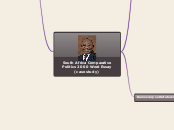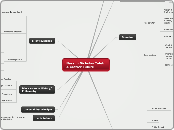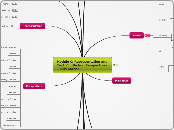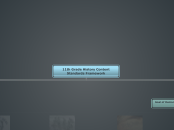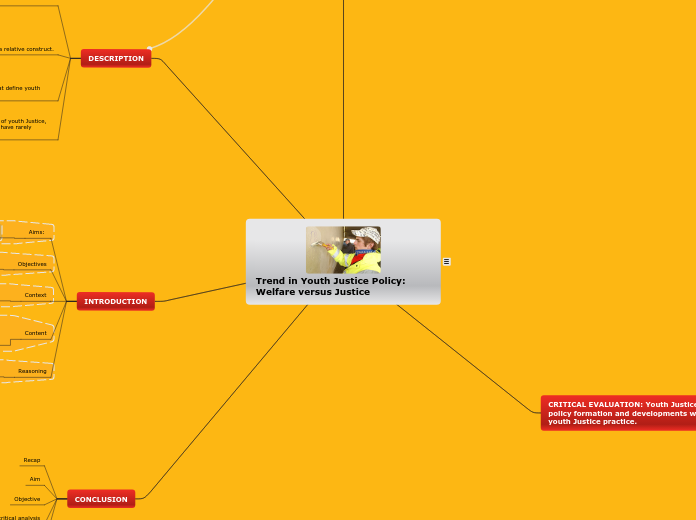South Africa Comparative Politics 2000 Word Essay (case study)
Sources for Data
Poverty/inequality
If you have nothing better to do with your life, read this
If you read this you'll probably know more about South Africa, than many of South Africa's government officials.
https://www.dpme.gov.za/publications/Reports%20and%20Other%20Information%20Products/World%20Bank%20Report%202018.pdf
General
CIA
https://www.cia.gov/library/publications/resources/the-world-factbook/geos/sf.html
Competitiveness
http://www3.weforum.org/docs/GCR2017-2018/05FullReport/TheGlobalCompetitivenessReport2017–2018.pdf
Freedom house
https://freedomhouse.org/report/freedom-world/2018/south-africa
OECD
https://www.oecd.org/eco/surveys/economic-survey-south-africa.htm
https://data.oecd.org/south-africa.htm?_ga=2.166121533.2058668077.1547811023-1325514010.1546867526
Polity IV
http://www.systemicpeace.org/polity/SouthAfrica2010.pdf
http://www.systemicpeace.org/polity/saf2.htm
Crime
https://businesstech.co.za/news/government/270689/south-africa-crime-stats-2018-everything-you-need-to-know/
Democracy vs Dictatorship
A variant of modernisation theory
Foreign aid also thought to reduce likelihood of democracy
Same mechanism > reduces dependence on the citizenry
foreign aid to dictatorships harms the welfare of the average citizen in these countries
and helps dictators stay in office through corruption and exploitation rather than through
the production of effective public policy (Bräutigam and Knack 2004; Bueno de Mesquita et al.
2003; Bueno de Mesquita and Smith 2004; Burnside and Dollar 2000; Clark, Doces, and
Woodbery 2006; Djankov, Montalvo, and Reynal-Querol 2005; Easterly 2002; Morgenthau 1962;
Van de Walle 2001)
However the relationship between foreign aid and democracy is more complicated than that. Wright (2009) finds that while aid helps those dictators with a narrow support
base—a small winning coalition —hang on to power, it can encourage some
dictators with larger support bases, and who might therefore have a good chance of winning fair
elections, to democratize or, at least, liberalize.
In many cases, one is also reducing the incentive
for the state to produce good economic performance,
thereby making the life of the average citizen
more miserable and making future donations of foreign
aid more necessary.
If anything that reduces the dependence of a state on its
citizens will harm the prospects for democracy, and it raises an interesting issue regarding
the use of foreign aid. By giving foreign aid to a state,
one is arguably reducing the dependence of that state on
its citizens.
Economic inequality should be bad for democracy only in countries where the economic elites do not have credible exit options; where they have credible exit options, the elites should be willing to accept democracy knowing that the poor will have incentives to curb their demands for redistribution.
Land inequality, however, is negatively correlated with democratisation.
high land inequality typically signals the existence of an upper class holding primarily immobile assets
Ansell and Samuels (2010)
South Africa is one of the most unequal
Credible commitment problems
Apartheid regime finally came to an end in 1994. One answer as to why is that the credible commitment problem faced by the ANC was solved by structural changes in the South African economy (Wood 2000).
Even with fair elections, the temptation for
the poor majority, or their elected representatives, to expropriate assets of those with substantial wealth might prove irresistible. It was clear to both the ANC and the NP leadership that a peaceful transition would require a credible commitment to protect elite incomes.
The Reconstruction and Development Programme (RDP), which was the ANC policy
manifesto for the 1994 elections, declared that attacking poverty and deprivation would be
the first priority of the democratic government (ANC 1994: 4),
RDP would be financed primarily through shifting budgetary
allocations within governments, and not through radical measures such as forcible
expropriation of property or the nationalisation of private companies
These changes included the increased mobility of the economic assets of the white minority that resulted from the globalization of the South African economy during the 1980s and early 1990s.
Because the economic performance of the South African economy depended heavily on these assets, the ANC’s promise not to redistribute them became credible. This helps to explain why the transition to democracy in South Africa occurred when it did.
That these economic
elites have credible exit
options and can realistically
withdraw their much-needed
investment in the economy
also helps to explain why the
poor will not vote to expropriate
them (Ansell and Samuels
2010; Przeworski and Sprague
1988). In effect, the poor
“depend” on the economic
elites for the economy to grow.
Now, if the ANC reneged on any promise not to redistribute too much, members of the white minority had the ability to simply remove their assets from South Africa and take them somewhere else.
In effect, this change in the mobility of the assets controlled by the white minority altered the power relationship between the white minority and the ANC.
During the Uruguay Round, the then President de Klerk's
administration agreed to substantial trade liberalisation in order to establish a presence in
international society
However, that was not so much out of magnanimity as because they thought that the then president, F.W. de Klerk, would seek a power-sharing deal in which the white minority would have some kind of veto. He had also warned them that a no vote would mean continuing economic sanctions and worsening chaos, perhaps even civil war.
In the whites-only 1992 referendum on whether the apartheid government should continue to pursue a negotiated settlement with the ANC, more than two thirds of whites voted yes.
s0001
As a result, South
Africa has gradually changed its trade policy to actively promoting liberalisation.
at the beginning of the 1990s, the process of democratisation in South Africa coincided
with progress in the GAIT multilateral trade negotiations, the so-called Uruguay Round
(1986-1994).
Two decades ago South African companies
were largely restricted to their national
base, but as trade and exchange controls
were eased after 1990 they began to compete
internationally.
The key mechanisms that drive the process and outcome of insurgent
democratic transitions are (1) the growing cost of sustained political repression,
(2) the steadily diminishing rate of returns for economic elites, and (3) the failure
of insurgents to secure an outright military victory
External actors provide the context and the incentive for the economic elites to risk a democratic outcome: the dominant neoliberal ideology will constrain prospects of wealth redistribution.
The central feature of insurgent democratic transition is that, if sustained, it alters the political-structural foundations of oligarchic societies and redefines the interests of both insurgents and incumbents in a way that facilitates the emergence
of a liberal democracy supported by a capitalist economy as second-best negotiated outcome.
The resulting structural basis of oligarchic politics saps the prospects of gradual reform by allaying the economic elites' fears of wealth and power redistribution.
The insurgent path to democracy spearheaded by popular classes (militant groups, urban poor, and peasants) thus becomes the viable alternative.
Wood's starting point is the characterization of South Africa as an oligarchic society in which the economic elite rely on political coercion to sustain accumulation in excess of that secured under more liberal, market-based arrangements.
Both, the insurgents and the established elites, come to recognize that the cost of maintaining the status quo (continued authoritarianism and political repression for incumbents) or of insisting on an ideally desirable outcome (socialism for insurgents) is much higher than the compromised mutual benefits derived from negotiating a politically feasible outcome.
A credible commitment problem occurs when (a) an actor who makes a promise today may have an incentive to renege on that promise in the future
Natural resources curse?
Immobility of resource assets
Modernisation effect – failure of population to move into industrial sectors keeps the middle class small and education shallow.
A repression effect – governments of oppressive rich regimes build up large security forces and/or engage in regional conflicts.
Rentier effect: Low tax rates and high spending dampen pressure for democracy
(Paler 2011) experiment in Indonesia. People are more willing to monitor their government and hold it accountable. when revenue comes from taxation.
Taxation instilled a greater sense of ownership over government funds
Secrecy over national resource industries give democracy-repelling powers: citizens are satisfied with low taxes and seemingly generous benefits only when they do not realize how much of their country’s wealth is being lost to theft, corruption, and incompetence
Low information environment.
Democracy is unlikely to emerge and survive in countries in which fixed asset holders are prevalent.
Studies have shown that democracy is less common and less stable in countries that rely on other primary resources, such as minerals, diamonds, and copper (Jensen and Wantchekon 2004), or whose economy is dominated by large landowners (Rueschemeyer et al. 1992).
Inequality
During the 1960s, legal and administrative restrictions on black labour produced increasing racial inequalities of
income; by 1970 the per capita income of whites was 15 times higher than that of blacks
wHY?
Changes in structural factors in the 1970s were important in reducing racial inequality: wage and occupational
discrimination decreased, and there was some improvement in black education. Later, the legalization of black trade
unions assistedin the rapidreal growth in non-white formal wages. While trade unions have been successful in
reducing the skewness in formal incomes, they have been less successful in preventing redistribution from labour to
owners of property. This suggests that the liberalization of markets has been more important than other structural
factors in shaping the distribution of income in South Africa in recent years.
In 1980 black trade unions were legalized. The net effect of these (and other)
changes was an erosion of discriminatory practices against blacks (Knight and McGrath 1987), especially in younger
cohorts (Moll 1992). Towards the end of the 1980s some firms began to adopt affirmative action rules—a process
which acceleratedafter the change of government in 1994
removal of discriminatory practices by foreign-ownedmultinational companies in the 1970s was
followed immediately by domestic firms competing for workers
Calculations of poverty in South Africa indicate high levels of deprivation. Whiteford and McGrath (1999) findthat, in
1991, almost half of all households were below the minimum living level (MLL) for (urban) African households.241
Their calculations also indicate that poverty is highest in the former ‘homeland’ areas (predominantly rural), where
over three quarters of households were below the MLL, and that incidence is highest amongst black households, twothirds of which were below the MLL
For black households, the depth of poverty increased between 1975 and 1991, as incomes of the poorest 60 per cent of
black households fell (Whiteford and McGrath 1999: 18). These findings provide some confirmation for the view that
the redistribution which occurred after 1970 was from whites to Asian, coloured, and the richer black households.
Comparedwith similar calculations of the extent of poverty in 1975, it appears that the percentage of households in
poverty fell in all racial groups, with the exception of whites.
After 1970 there was a redistribution of income from whites to blacks. The share of total income accruing to whites
(13 per cent of the population in 1991) fell from 71 per cent in 1970 to 61 per cent in 1991, while that of blacks (about
75 per cent of the population in 1991) rose from 20 per cent to 28 per cent over the same period.
Gini
coefficient for householdincome of the whole population didnot change significantly between 1975 and1991.237
However, racial Gini coefficients all increased
However, for each race group the share of total income accruing to the
lowest 40 per cent declined in the two decades to 1991, while the share of the top 10 per cent increased.
Up until 1970 job reservation for whites ensuredtheir protectedemployment at high wages andthe crowding of the
rest of the population into low-skilled, low-paid jobs. The disparity between white and non-white, especially black,
wages widened considerably, and by 1970 the per capita income of whites was 15 times higher than that of
blacks (WhitefordandMcGrath 1999: 1). Monopsonistic employment practices in mining meant that black wages did
not rise in nominal terms for about 50 years; black wages in agriculture were also stagnant (Lipton 1985: 44, 388).
Some real growth did occur in manufacturing wages, as higher skills are required (Lundahl et al. 1992: 299), although
blacks tended to occupy lower skilled positions.
South Africa's per capita income is sufficiently high for it to be rated ‘upper middle-income’ by the World Bank, inequality in the distribution of personal income, compounded by historical underinvestment in human capital
(health and education) for the majority of the population, means that poverty is widespread.
During the 24 years from
1970 to the change of government in 1994, racial disparities in income actually declined as apartheid was eroded in the
workplace, although falling inequality between races—achievedprimarily by a redistribution from whites to blacks—was
accompaniedby rising inequality within race groups.
As political protests intensifiedin the 1970s, andas the government began to move proactively towards
promoting export diversification, investment in black education rose rapidly from its historically low level, contributing
to the improvement in racial income distribution in this period. Despite the increase, however, racial disparities in the
quality of education provided by the state remained extreme.
Prior to the 1970s, it was a matter of explicit policy not to provide more than a basic education for Africans, who were
viewedby the apartheidgovernment as an unskilledworkforce
Urbanisation
By 1991 around 90% of the non-black population lived in urban areas. The black population was predominantly living in rural areas in 1951 and
urbanised until 1991, but remained significantly less urbanised than the other three
population groups. As emphasised before, this urbanisation was severely influenced
by government policies that kept the black population out of urban areas in ‘white’
South Africa and engineered urbanisation in the homelands
Second, while more than 90% of whites
and Indians lived in urban areas in 1986, less than 60% of blacks did, and we observe
a large jump in urbanisation starting in the 1990s. Third, while keeping blacks out
of the urban areas was one of the major goals of apartheid policy, the absolute level
of black population in ‘white’ urban areas increased nevertheless. This suggests that
strong urban attraction pulled blacks into urban areas, while apartheid reduced the
rate of urbanisation (Feinstein, 2005, p.157).
p 11
Specifically, countries tend to have large agricultural sectors but relatively small manufacturing
and service sectors in the early stages of development. As the modernization process brings
about efficiencies in the agricultural sector, resources are freed up for use in manufacturing and
service sectors. Over time, and as countries continue to develop and mature, the manufacturing
and service sectors become larger and larger relative to the agricultural sector.
Many of the unskilled used to work in
mining and agriculture, but both these sectors
have been shedding jobs. Mining now
accounts for a mere 2.5% of employment
and 3% of GDP, down from around 14% in
the 1980s. Having been the world’s biggest
gold producer for more than a century,
South Africa has fallen behind China, Australia
and America. Some of its mines are
nearing the end of their productive lives.
Subtopic
In a country with the world’s largest reserves of gold, platinum, manganese and chrome, mining in 1994 accounted for less than 8% of GDP, down from a peak of 21% in the 1980.
There are five economic sectors; the primary sector which includes agriculture, mining and other natural resource industries; the secondary sector covering manufacturing, engineering and construction; a tertiary sector for the service industries, the quaternary sector for intellectual activities involving education and research and the quinary sector reserved for high level decision makers in government and industry.
Since the early 1990s, economic growth has been driven mainly by the tertiary sector
South Africa holds the world’s largest reserves of gold, platinum-group metals and manganese ore.
Many of the unskilled used to work in mining and agriculture, but both these sectors have been shedding jobs
Origins of GDP 2018.
Agriculture 2%
Secondary sector, of which Manufacturing
29% 13%
Services 69%
Pocket
Industrialise and more focused on the service industry rather than agriculture.
Should lead to a population shift from rural areas to urban ones
South Africa!! boyyyy
A key structural change has
to do with the relative size of the “sectors” in the economy.
Changes in the socioeconomic structure of a country that accompany economic development in the modernization process (not high income per se) promote the emergence and survival of democracy.
One criticism of classic modernization theory is that it lacks a strong causal mechanism linking national income with democracy
(Acemoglu and Robinson 2006; Rueschemeyer, Stephens, and Stephens 1992).
Survival theory
Poor people may be more willing to take a chance with dictatorship and, hence, why democracy tends to be unstable in poor countries.
Now imagine that you are a poor person living in a democracy. Consider what life would be like for you in a dictatorship. There is a large possibility that you would remain poor. There is, however, a small possibility that you could become very rich if you were in the dictator’s group. Given that you are already poor and really have nothing to lose, you might want to take a gamble and switch to a dictatorship.
Przeworski argues that the decision to choose democracy or dictatorship depends on the types of outcomes that citizens expect democracy or dictatorship to produce for them.
Whereas Przeworski describes democracy as a system in which they can expect at least a moderate level of consumption, he describes dictatorship as a system in which they might win or lose everything.
Przeworski’s survival story predicts that democracy is more likely to survive as countries develop and become richer, but
it is not more likely to emerge.
Income has no effect on transitions to democracy according to Przeworski
Classic Modernisation theory
Przeworski et al. (2000, 88) summarize modernization theory in the following way:
As a country develops, its social structure becomes complex, new groups emerge and organize, labor processes require the active cooperation of employees, and, as a result, the system can no longer be effectively run by command: The society is too complex, technological change endows the direct producers with autonomy and private information, civil society emerges, and dictatorial forms of control lose their effectiveness. Various groups, whether the bourgeoisie, workers, or just the amorphous “civil society,” rise against the dictatorial regime, and it falls.
Seymour M. Lipset (1959)
Predictions:
Two ways of looking at development:
2. Amartya Sen
Achievement of higher quality of life (health, literacy)
Measurement: GNP per capita adjusted for purchasing power, life expectancy, literacy rates
1. Simon Kuznets
Increase in production capacity (land, labour, capital, technology)
Measurement: GNP per capita, levels of dependence on industry vs. agriculture
Economic Development helps sustain democracy (survival)
Hypothesis: States with higher levels of development are more likely to stay as democracies
Economic development promotes democracy (transition)
Hypothesis: States at higher levels of development are more likely to become democratic
Model:
Eventually – a society can no longer be contained by a dictatorship
Structures are too complex, civil society rise up against dictatorship
All societies go through phases of development (economic maturity) As countries develop, society changes: Urbanisation, increased levels of education etc.
Information about the Task
You should consider the following elements within your project:
7. Conclusion/ summary of findings.
6. Can we be sure that you are identifying causal factors or could this be association instead of causation?
5. What empirical evidence exists to support your understanding of the process of democratisation within this case?
4. How do you measure these different theories? What measures exist that you can utilise?
3. What theories have you identified as being relevant to your case study?
2. How do you define/conceptualise democracy, and what is the justification?
1. Introduction and background to the project
This project should represent a case study examining competing theories of democratisation within your case study
Submission and Deadline: Friday 25th January, 2019 at Midday.
